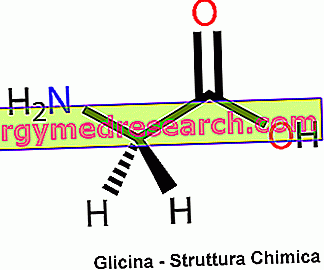By Dr. Stefano Casali
Endocrinology is the discipline that studies the complex system responsible for the transmission of chemical signals and the transfer of information between the different districts of the body, through which it evokes specific biological effects; it also deals with communication and control in a living organism by means of chemical mediators, called "messengers", hormones.
Hormones can be synthesized in part or entirely in the living organism. Chemical messengers are hormones defined as endogenous molecules that transfer information into the body through both extracellular and intracellular communications. The term hormone derives from the Greek όρμάω - "to set in motion". In the classical definition the hormone is a molecule that is synthesized in an organ and is transported by the circulatory system to act on another tissue called "target tissue".
Metabolism is that part of endocrinological science that studies the control of biochemical mechanisms within the body, both anabolic and catabolic. It includes multiple different activities such as: gene expression, biosynthetic and catalysis pathways, modification, transformation and degradation of biological substances and the processes by which it obtains, stores and mobilizes energy substrates. The homeostasis is the condition of internal stability of the organisms that must be maintained even when the external conditions vary through self-regulating mechanisms. The Endocrine System, as a system of intersystemic and intercellular communication, integrated with the Nervous and Immune System, presides over the transfer of information by activating stimulatory or inhibitory reactions, modulating specific biological functions. The mutual interconnection of the three systems guarantees the adaptation of the organism to external / internal stimuli.
Hormones can have an Autocrine action , which is exercised on the cells that produce them, a Paracrine action , which is exercised on neighboring cells, a Juxtacrine activity , which is performed at the interface between two neighboring cells or between cell and extracelular matrix, an intracrine activity , which occurs through the conversion, in the cell, of a weakly active hormone in a second hormone that transmits the signal at the cellular level.
Target Cell Concept
Any cell in which a specific hormone binds to its receptor causing or not a biochemical or physiological response. The response of a target cell can vary, it can give different responses to a single hormone.
The response of the Target Cell depends on
- Hormone concentration
- Proximity of the target organ with the source
- The link with specific transport proteins
- Percentage of transformation of an inactive hormone into its active form
- Percentage of hormone clearance
Hormonal Receptors
The target cell is also defined by the ability to specifically bind a hormone by means of a receptor, this is very important since the concentrations of the hormones are very low. Receptors can be divided into cytoplasmic membrane receptors and intracellular receptors, and are characterized by two functional domains, Recognition and Coupling. The first binds the hormone, the second generates the signal that links the hormone to an intracellular function.
Classification of hormones based on their mechanism of action:
Group of hormones that bind to intracellular receptors
- Androgens
- Calcitriol [1, 25 (OH) 2 D 3 ]
- Estrogen
- Glucocorticoids
- mineralocorticoids
- progestin
- Retinoic acid
- Thyroid hormones (triiodothyronine and thyroxine)
Group of hormones that bind to cytoplasmic membrane receptors
- The second messenger is Cyclic Adenosine Monophosphate
Catecholamines α2 β2 Adrenergic, Adrenocorticotropic Hormone (ACTH) Angiotensin II, Antidiuretic Hormone (ADH), Calcitonin, Chorionic Gonadotropin, Corticotropin-releasing -hormone (CRH), Follicle-stimulating-hormone (FSH), Glucagon, Lipotropin (LPH), Luteinizing Hormone (LH), Melanocyte-stimulating-Hormone (MSH), Parathyroid Hormone (PTH), Somatostatin, Thyroid stimulating hormone (TSH).
- The second messenger is the Cyclic Guanosine Monophosphate
Atriopeptides, Nitric Oxide.
- The second messenger is Calcium or Phosphainositides (or both)
Catecholamines α1 Adrenergic, Acetylcholine (muscarinica), Angiotensin II, ADH, Epidermal Growth Factor (EGF), Gonadotrpin-releasing-hormone, Pletelet-derived growth factor, Thyrotropin-releasing hormone.
- The second messenger is a Waterfall Kinase / Phosphatase
Chorionic Somatomammotropin, Erythropoietin, Fibroblast growth factor, Growth hormone (GH), Insulin, Insulin-like growth peptids (IGF-1, IGF-II), Nerve growth factor, Oxytocin, Prolactin.
Chemical classification of hormones
Derivatives of amino acids
Tryptophan → Serotonin and Melatonin
Thyroxine → Dopamine; Norepinephrine; Epinephrine; triiodothyronine; Thyroxine
L-Glutamic acid → γ-aminobutyric acid
Histidine → Histamine
Peptides or polypeptides
Thyrotropin release factor
Insulin
gh
Steroids
Progestins, androgens, estrogens,
Corticosteroids
Derivatives of Fatty Acids
Prostaglandins
Leukotrienes
thromboxane
Frequency of endocrine disorders
Most frequent endocrinopathies
- Diabetes mellitus
- Thyrotoxicosis
- Hypothyroidism
- Non-toxic nodular goiter
- Pituitary Diseases
- Adrenal disorders
Most common endocrinopathies in medical practice
- Diabetes mellitus
- Obesity
- Iperlipoprotinemie
- Osteoporosis
- Paget's disease
Bibliography



